Five Places You Must Visit During Spring in Croatia
March 10, 2022 - This month, the frigid temperatures and strong winds of winter have already begun to turn into warm and colorful days, thus welcoming spring. Is it worth visiting during this time of year? Of course. And here are five places you cannot miss during spring in Croatia.
Winter in Croatia is a difficult concept to criticize. Despite low temperatures, strong winds, snow, or rain, Croatians have always found a way to positively view the arrival of the winter months. In central and eastern Croatia, the cold and snow are not strong enough to break the spirit of its inhabitants. Winter is synonymous with the holiday season, with cities and towns brightly and colorfully decorating their streets, and filling their parks and plazas with fairs and concerts.
In the same way, along the Croatian coast, the locals take back the cities from the tourists and the storms are intermittent since sunny days predominate. Thus, the people who live in front of the Adriatic find a great excuse to put on their best coats, their sunglasses, and get together with their friends and family to have a coffee in the rivas and old towns of their cities.
However, it is true that when the day darkens at five in the afternoon or the temperature of the sea is too cold to take a dip, summer days are missed throughout the country. For this reason, the arrival of spring is always welcome in Croatia and invites those who reside in the country to venture outside their homes without having to wear more than two pieces of clothing. The beginning of spring in Croatia is March 20, and so that you can plan your next adventure, we share five places that you cannot miss at this time of year.
Zagreb
Perhaps the first thing that comes to mind when thinking of spring in Croatia is some of its 8 national parks or 12 nature parks. However, the Croatian capital of Zagreb is literally a spectacle of colors and a great atmosphere during this time of year. Although the official date for the beginning of spring is still 10 days away, the inhabitants of Zagreb are already witnessing the first blooms in their avenues, streets, and parks. If you're coming to Zagreb during spring, you probably won't know where to start.
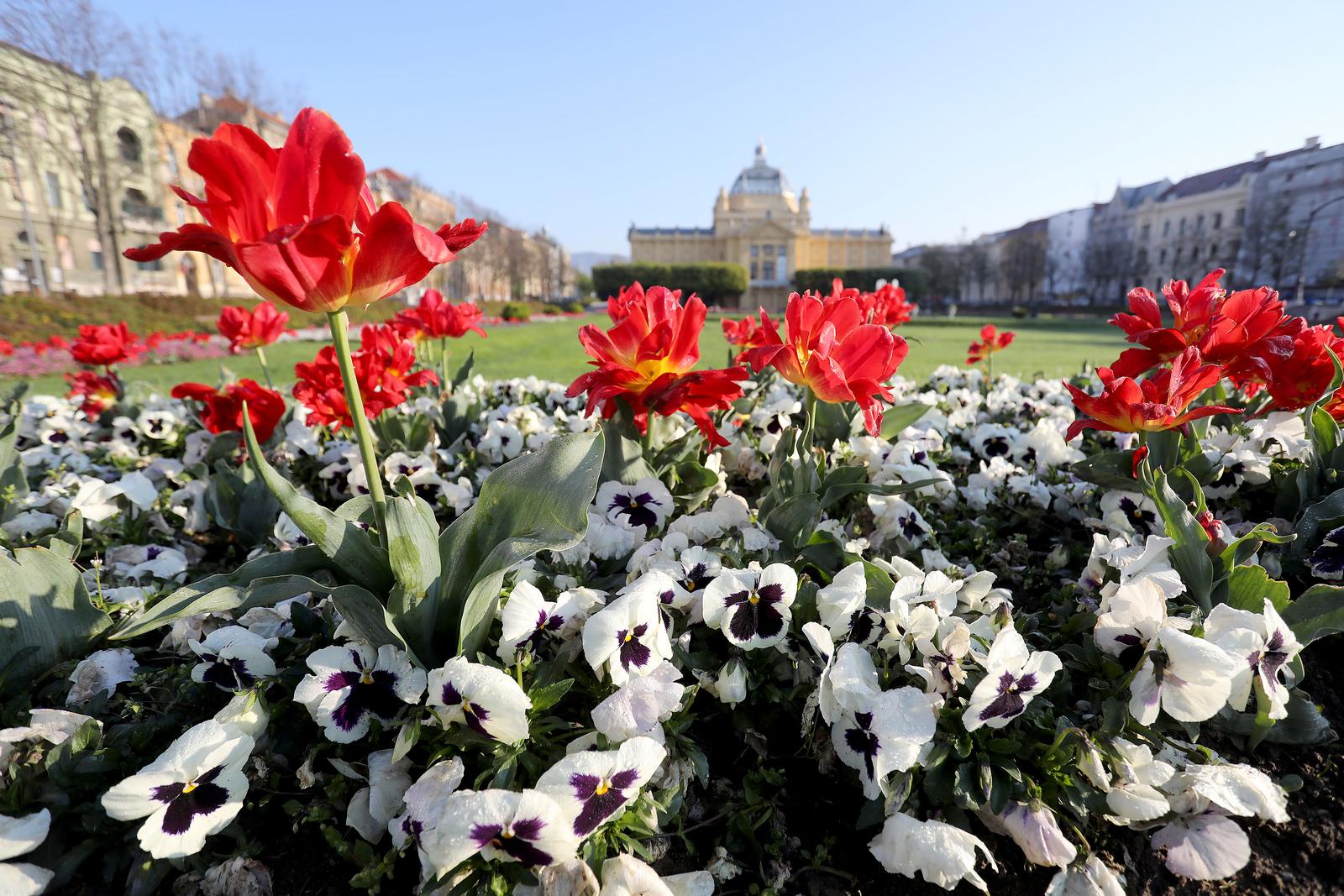
Flowers blossoming in the gardens of King Tomislav Square. (Photo: Patrik Macek/PIXSELL)
Stroll through the beautiful parks in Zagreb's upper town, from Zrinjevac to King Tomislav Square, where you could even sit in its gardens reading a book while enjoying the atmosphere and the colors of its flowers and trees. If you want to go for exercise and at the same time enjoy the blossoming in the spring, visit the parks of Jarun, Bundek or Maksimir, in which you could also organize a picnic with your friends. Or maybe organize a walk through the Zagreb Botanical Garden, in the upper town of Zagreb. You will see that when you get home and check your phone, you will have probably taken more than a hundred photos throughout the day. Zagreb is home to many of the best spots to be during spring in Croatia.
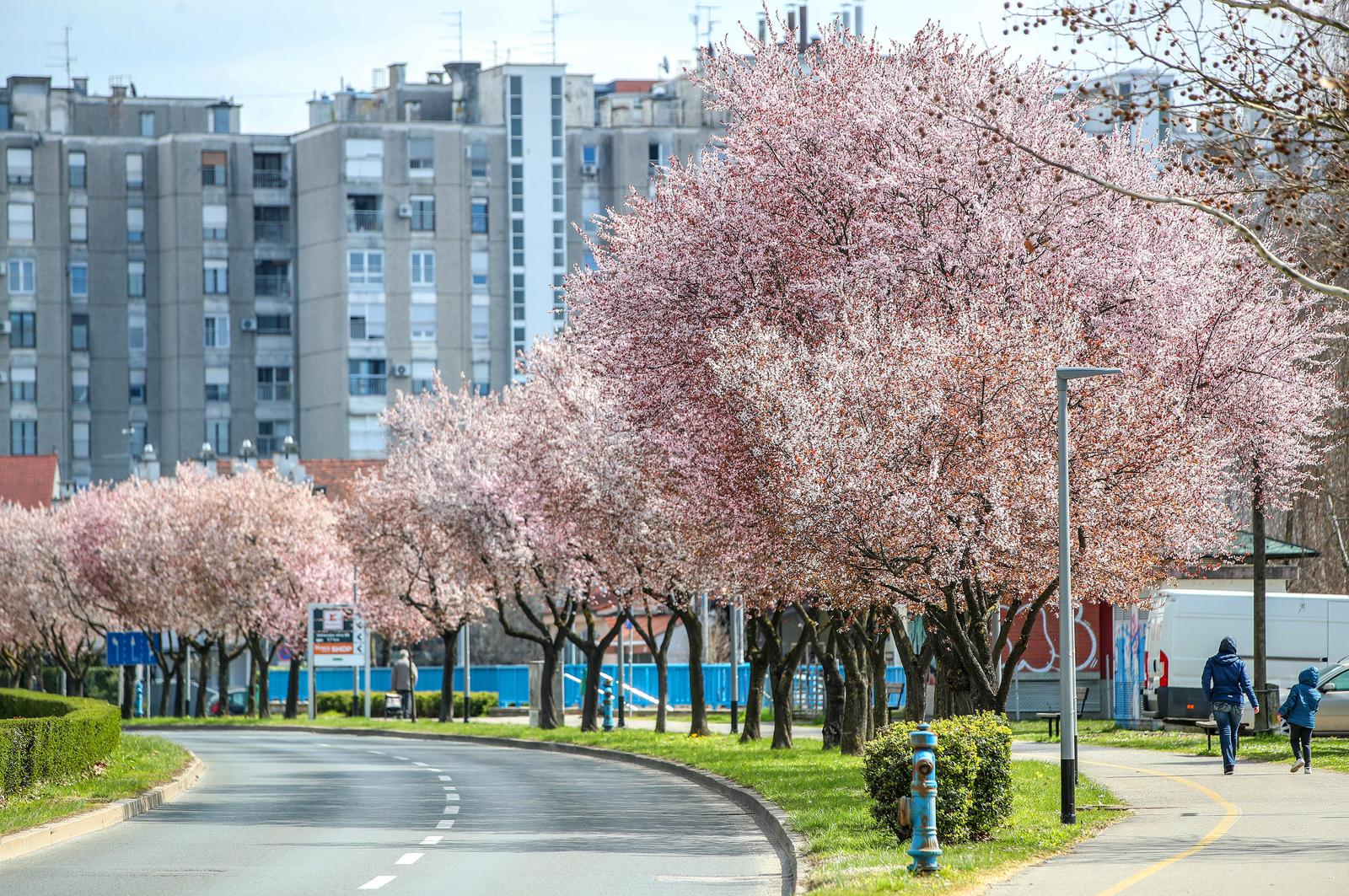
Cherry trees in the district of Prečko, Zagreb. (Photo: Igor Kralj/PIXSELL)
Bonus tip: visit Šulekova street in Zagreb in Spring, which has become famous for its spectacular colors thanks to the blossoming of its cherry trees. Don't forget to go with someone who can take amazing pictures of you for your Instagram!
Plitvice Lakes National Park
It really is impossible not to highlight the national and natural parks of Croatia when talking about a change of season. I do not mention a season in particular because each one offers something magical and different. For example, when we talk about Plitvice Lakes National Park, we cannot compare the four seasons, just enjoy them to the fullest. Autumn's intense red and orange colors beautifully contrast with turquoise lakes, resembling a frame straight out from a fairy tale. Winter covers the park with snow, and the result is a mixture of whites and turquoises that will make your jaw drop. And not to mention the summer, where the green forests also serve as a refuge from the high temperatures with their shade.
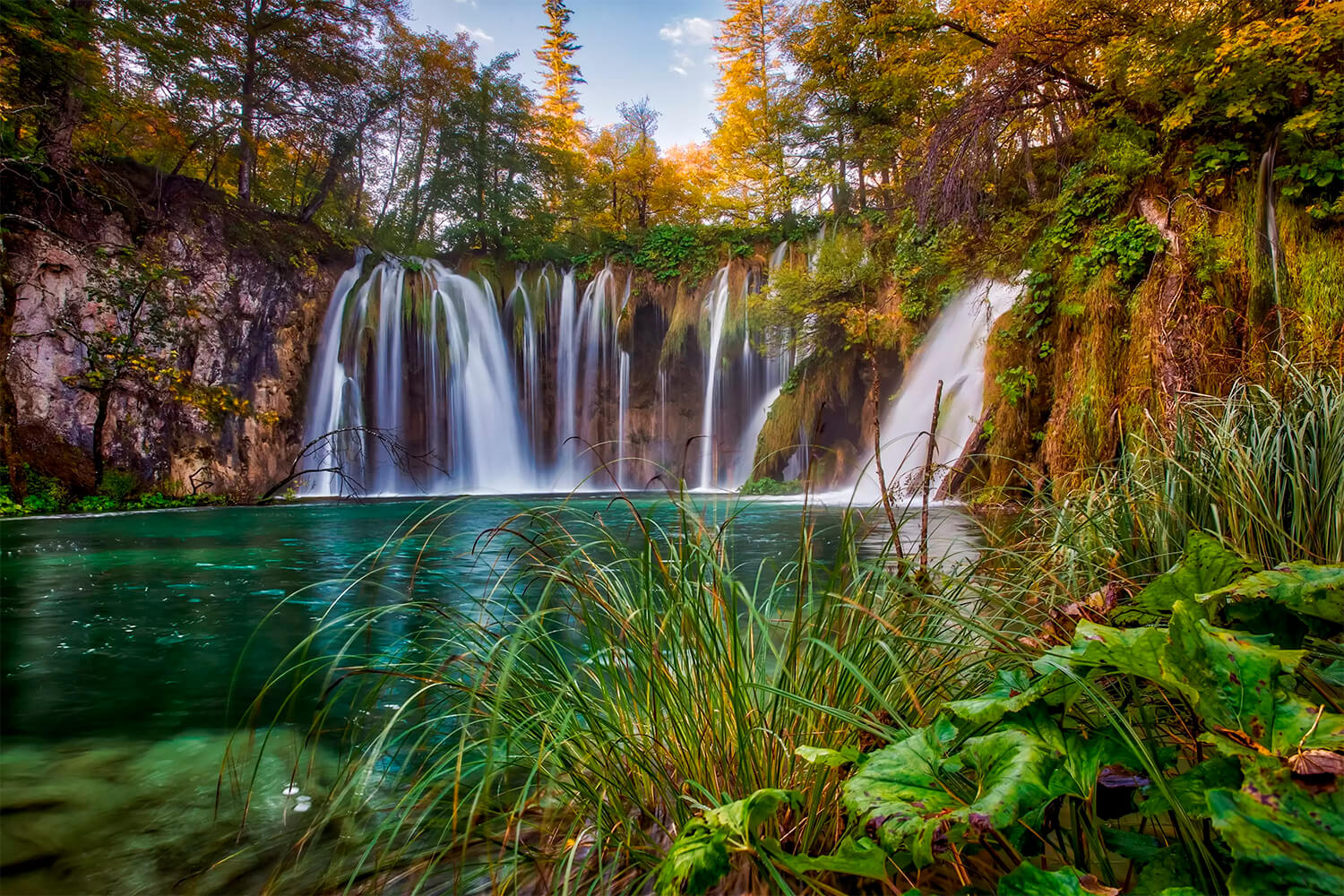
Plitvice Lakes National Park, stunning all year round. (Photo: Vedran Bozičević)
But we all know that, in a place as diverse in flora as the Plitvice Lakes National Park, it is essential to witness its colorful show during spring. It's arguably the perfect time, as it's neither too cold nor too hot to overwhelm you as you wander through the park, and it's one of its most photogenic times of the year!
Find HERE the prices and rates of the tickets to visit the Plitvice Lakes National Park.
Split
We also don't want to overwhelm you with a shower of colors, if that's not your thing. And it is not because Split does not have them, but the experience of spring in the Dalmatian city is lived in a different way. Spring in Croatia comes in different shapes and colors. Although the trees and parks of Split are also beginning to regain their leaves and greenery, the arrival of spring means that the return to the sea and the beaches is getting closer. You will feel that wearing a coat could be unnecessary, with temperatures that can rise up to 17 degrees. Even with the water still relatively cold, some brave souls are already starting to visit the city's beaches to take a dip, realizing that the frequent sunny days and rising temperatures will dry them out quickly once out of the water.
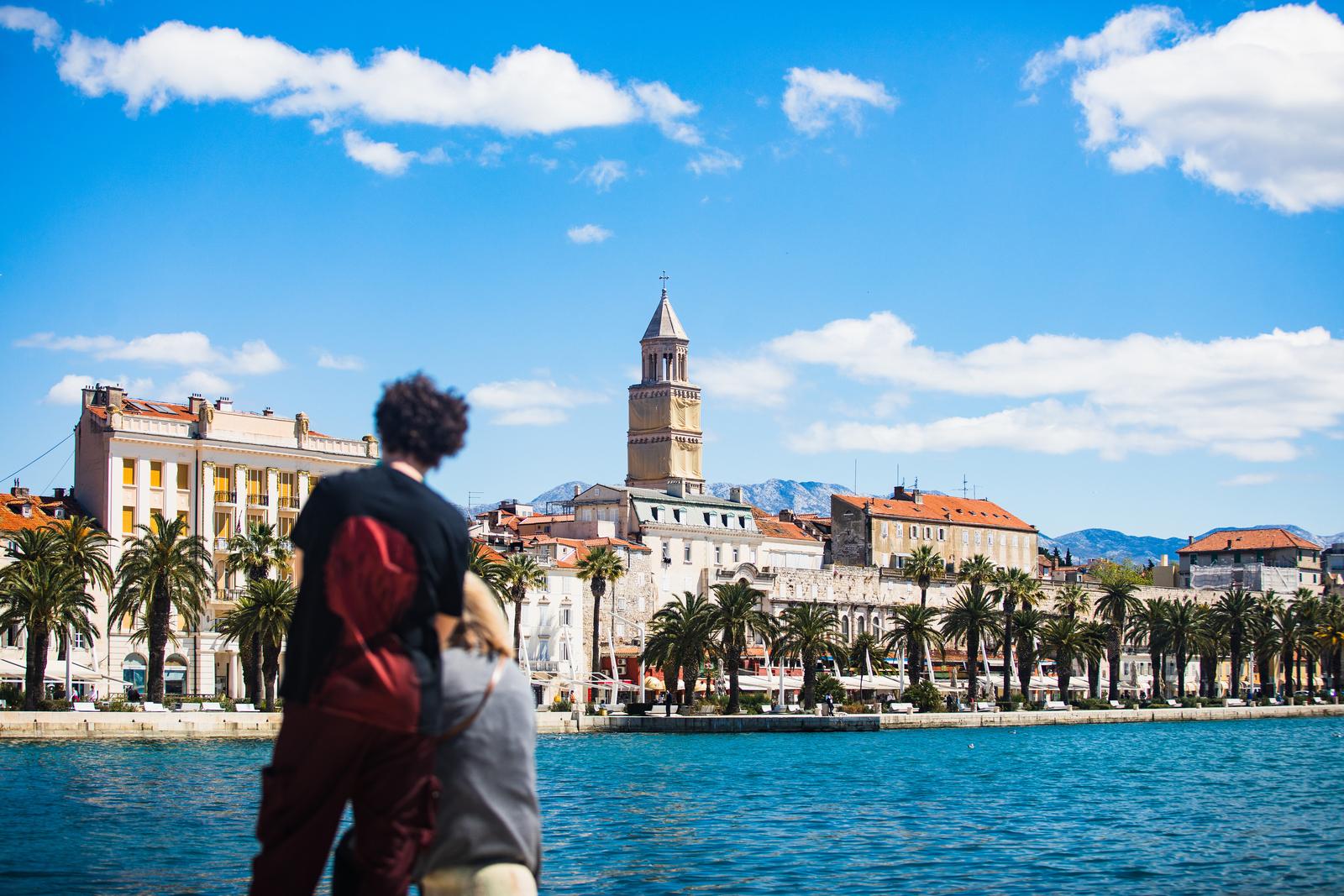
The Diocletian Palace in Split, not during summer, but in April. (Photo: Milan Sabic/PIXSELL)
But without a doubt, the most exciting thing about spring in Split is the progressive reopening of many restaurants, bars, and cafes throughout the season, which have already finished their respective maintenance and are beginning to prepare for the arrival of the busy summer. If you were in Split during the winter, and you will stay here until at least the beginning of summer, you will witness a city that is becoming active every day. Also, ferry lines are starting to increase and you can have the privilege of visiting more islands and destinations without the crowds. And beware, enjoying spring in Split is something that can be replicated throughout the Croatian coast, from Istria to Dubrovnik!
Krka National Park
If you change your mind and would indeed like to see the spring in Croatia blooming at its best, there will always be a national park or nature park near you. The Krka National Park has nothing to envy Plitvice Lakes since its sixteen plunging waterfalls, winding hiking trails, and vast expanse of lush, green forests place it as one of the most visited destinations in the entire country. Krka, apart from being recognized for its spectacular sceneries, is also a very popular destination for adventure lovers. Whether on foot or by bicycle, it is never enough to discover all the wonders that the national park hides. And if you had to pick an ideal time of year to visit, the spring months should be at the top of your list.
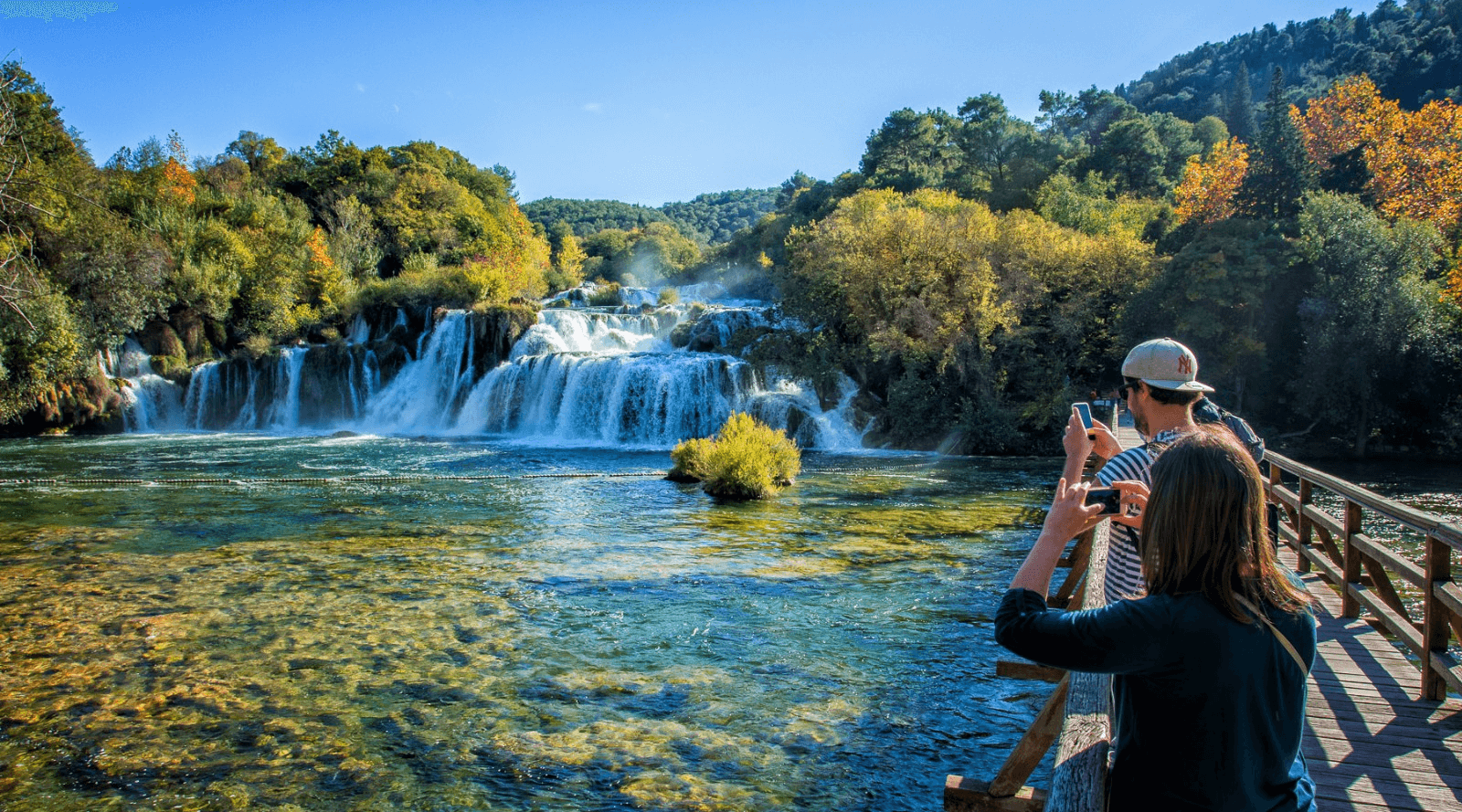
Very close to Šibenik, and less than an hour from Split - Krka National Park. (Credit: Krka National Park)
Although the new measures taken by the National Park, which prohibit visitors from bathing in the falls, have reduced the saturation of people in the main circuit of Krka, summer is still the time of year with the highest volume of tourists. If you are looking to connect better with the nature of Krka, you will surely find it in spring with almost as pleasant weather, colors everywhere, fewer people, and... cheaper prices!
Find HERE the prices and rates of the tickets to visit the Krka National Park.
Osijek
Of course, spring comes everywhere, and not only on the coast and in central Croatia. Moreover, it could be said that spring in eastern Croatia arrives with incomparable intensity. The vast forests, fields, and crops in Slavonia and Baranja are a visual delight both for those viewing it from above with their drones, as well as for those on foot. This part of Croatia is often mistakenly considered a cold, nothing-happening region, but few have the privilege of enjoying its energy and warmth all year round, even in the harshest of winters. And all the more reason, you'll want to check it out for yourself in a season with better weather and full of greenery.
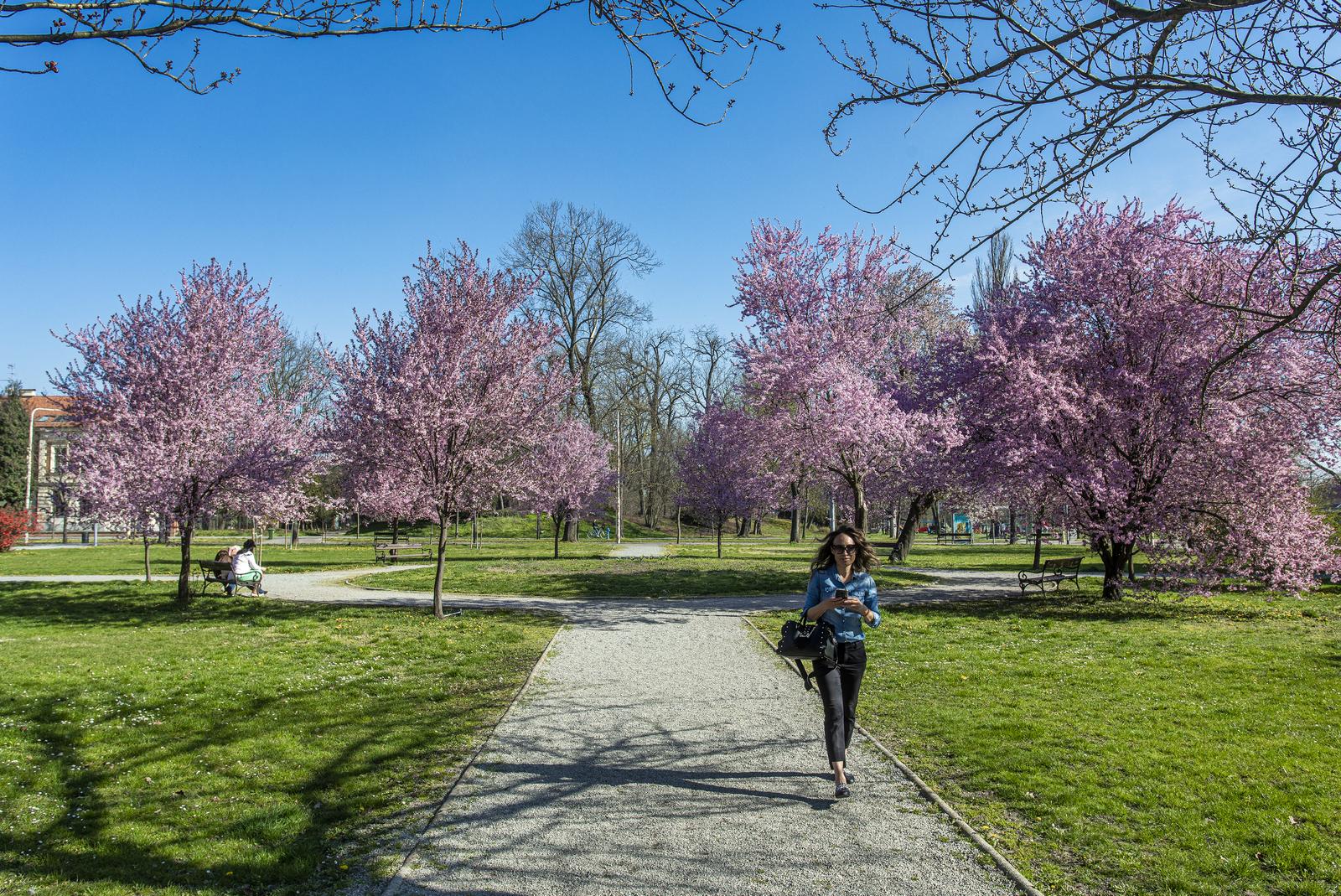
Cherry trees in King Krešimir IV park in Osijek. (Photo: Davor Javorovic/PIXSELL)
There are so many places to visit in this region during spring, but what better place to start than in the largest city in eastern Croatia, and the fourth largest in the country. Osijek is famously known as the greenest city in Croatia, with more parks and public green areas than any other town in Croatia. Wherever you go in Osijek during the spring, you will come across an immeasurable number of trees and gardens full of vibrant colors. Some of the parks that you cannot miss are King Tomislav Park, Sakuntala Park, or King Krešimir IV Park, protected as the first monument of park architecture in Croatia.
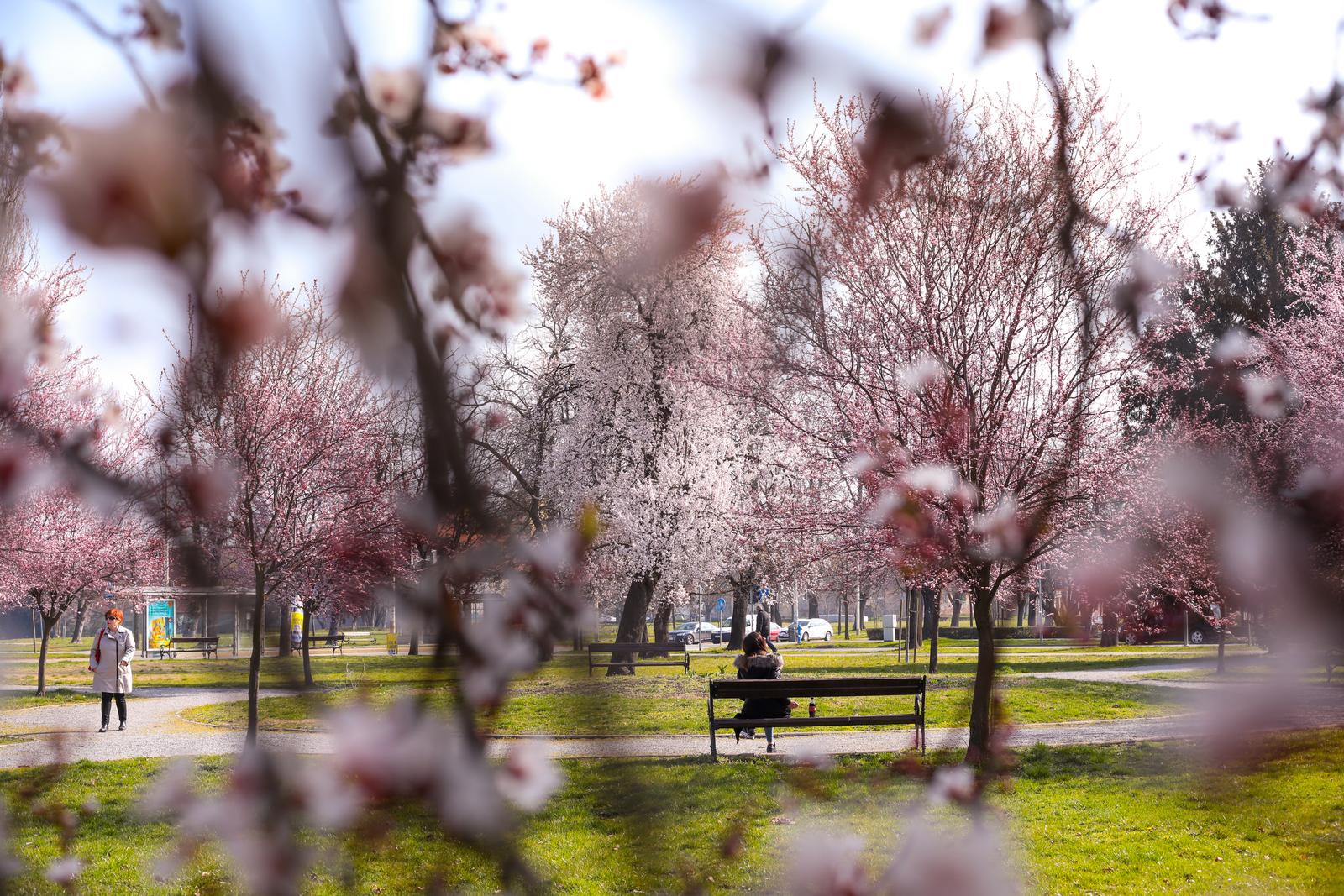
Cherry trees in King Krešimir IV park in Osijek. (Photo: Dubravka Petric/PIXSELL)
These are just five examples of places that you cannot miss during spring in Croatia, but believe us when we tell you that the whole country, throughout its territory, has some magic waiting for you during the most colorful season of the year.
For more on travel in Croatia, follow TCN's dedicated page.
PHOTOS: Extraordinary Plants of Klis Fortress Show Two Sides of Dalmatia
January 2, 2021 – High on the mountains, overlooking the city of Split, the historic settlement of Klis stands on the border between two distinct climate regions – the Mediterranean and the Dalmatian hinterland. The sometimes rare and extraordinary plants of Klis Fortress are characteristic of both. A new book details the flora you can find on both sides of the Dinaric Alps
The views from Klis are spectacular. The great city of Split lies below you, perched on the edge of the glistening Adriatic, beyond it, the islands of Čiovo, Šolta, Brac, Vis and Hvar. It's a view that has been admired for over 2000 years.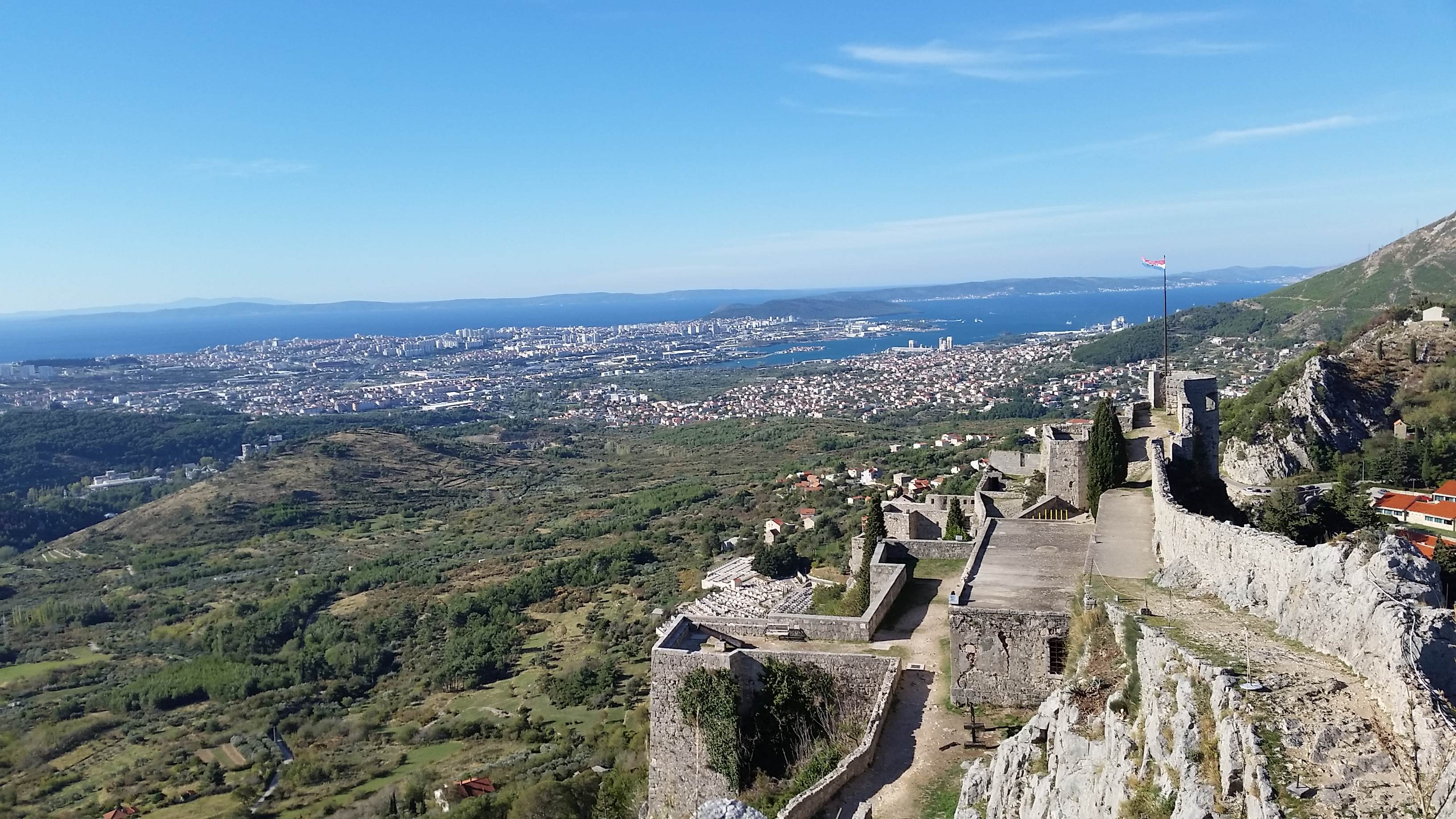 The view from Klis Fortress
The view from Klis Fortress
That's how long a fortress has stood here. Restructured and rebuilt several times over the millennia, within the walls of the impressive Klis Fortress lie much of the recent history of these lands – of the Illyrians and the Romans, the arrival of both Slavic people and of Christianity, the defence of Christian Europe from the Ottomans. So steeped in history are these walls, little wonder the fortress was chosen as a filming location for the popular Game Of Thrones series.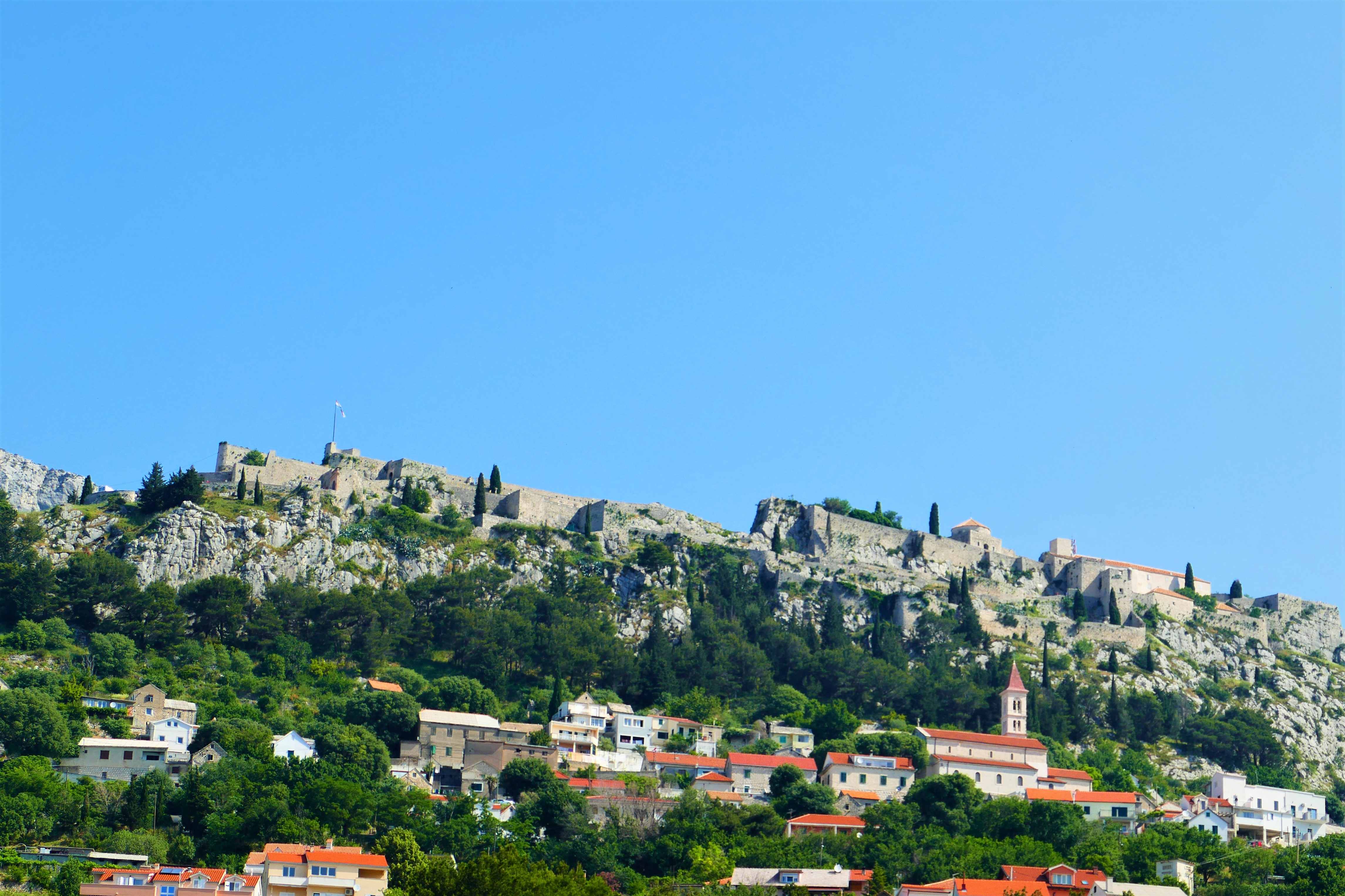 Klis Fortress
Klis Fortress
With its view so irresistibly inviting the eye, you could be forgiven for missing the plants of Klis Fortress. That's unfortunate. The fort straddles the top of the Dinaric Alps – one half existing within the sub-Mediterranean climate of the Dalmatian hinterland, the other on the distinctly warmer side of the Adriatic. This creates a unique environment for a wealth of flora. Not used as a fortress since the threat of Ottoman invasion subsided, these days the structure usually welcomes only tourists. The plants of Klis Fortress have reached into the grounds of the buildings, indeed into its very walls.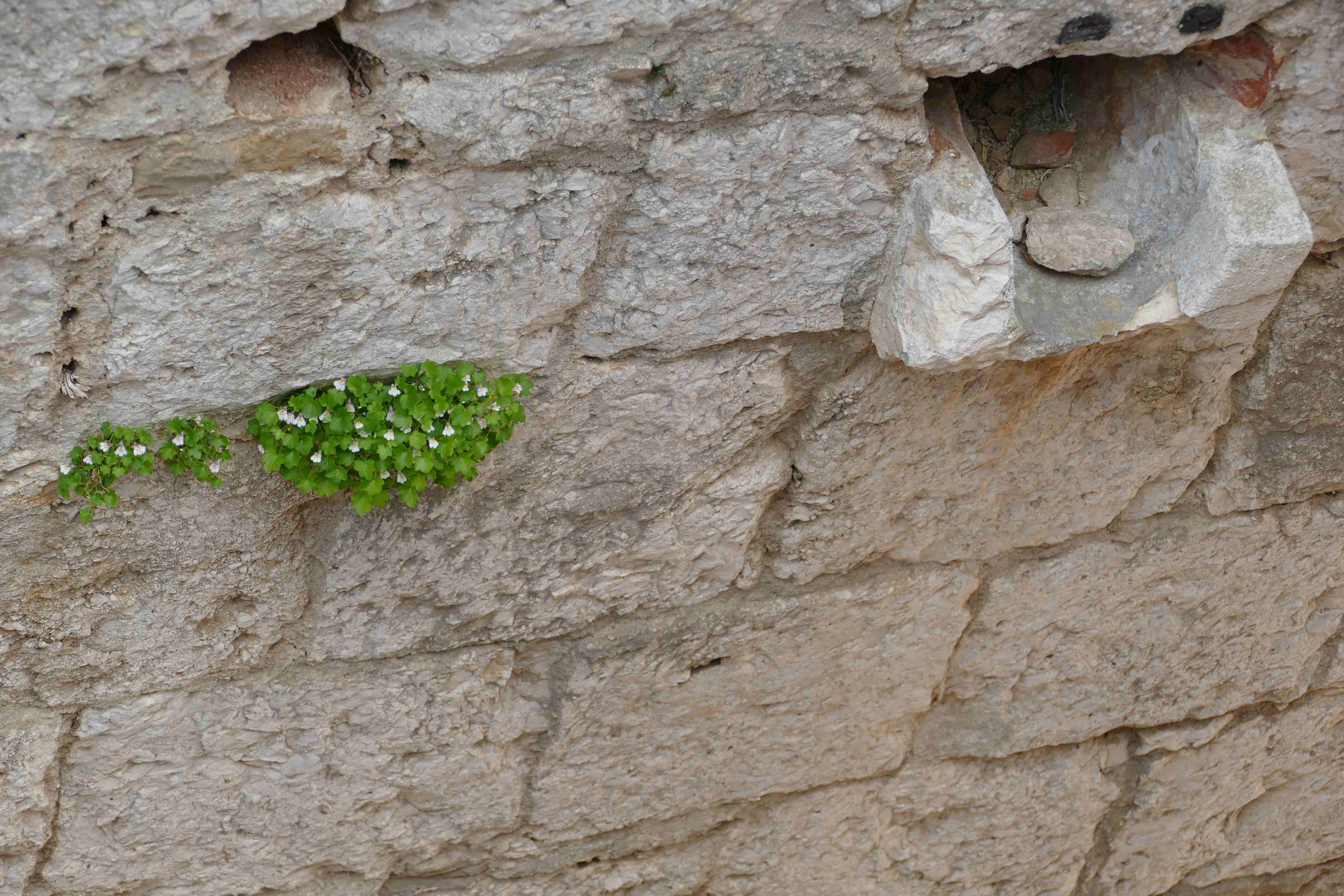 Cymbalaria muralis - Ivy Leaved Toadflax within the walls of Klis Fortress
Cymbalaria muralis - Ivy Leaved Toadflax within the walls of Klis Fortress
One person for who the plants of Klis Fortress did not go unnoticed is Ivan Limić. He lived in Klis all of his life, before leaving to get his degree, then a masters, at the Forestry department of the University of Zagreb. Today, he works for the Institute for Adriatic Crops and Karst Reclamation (IAC) on a PhD student's position. Having a specific interest in botany, he knows the plants of Klis Fortress better than most and after he met botanist Vedran Šegota of Herbarium Croaticum while in Zagreb, they decided they should work on a project together. After several years of work, that project - a book, 'Biljke Tvrdave Klis (Plants of Klis Fortress)' – has finally been released. Although helmed by co-authors Vedran and Ivan, it has actually been a project that involved a much greater group of contributors, not least the community of Klis and some of the best botanists in Croatia.
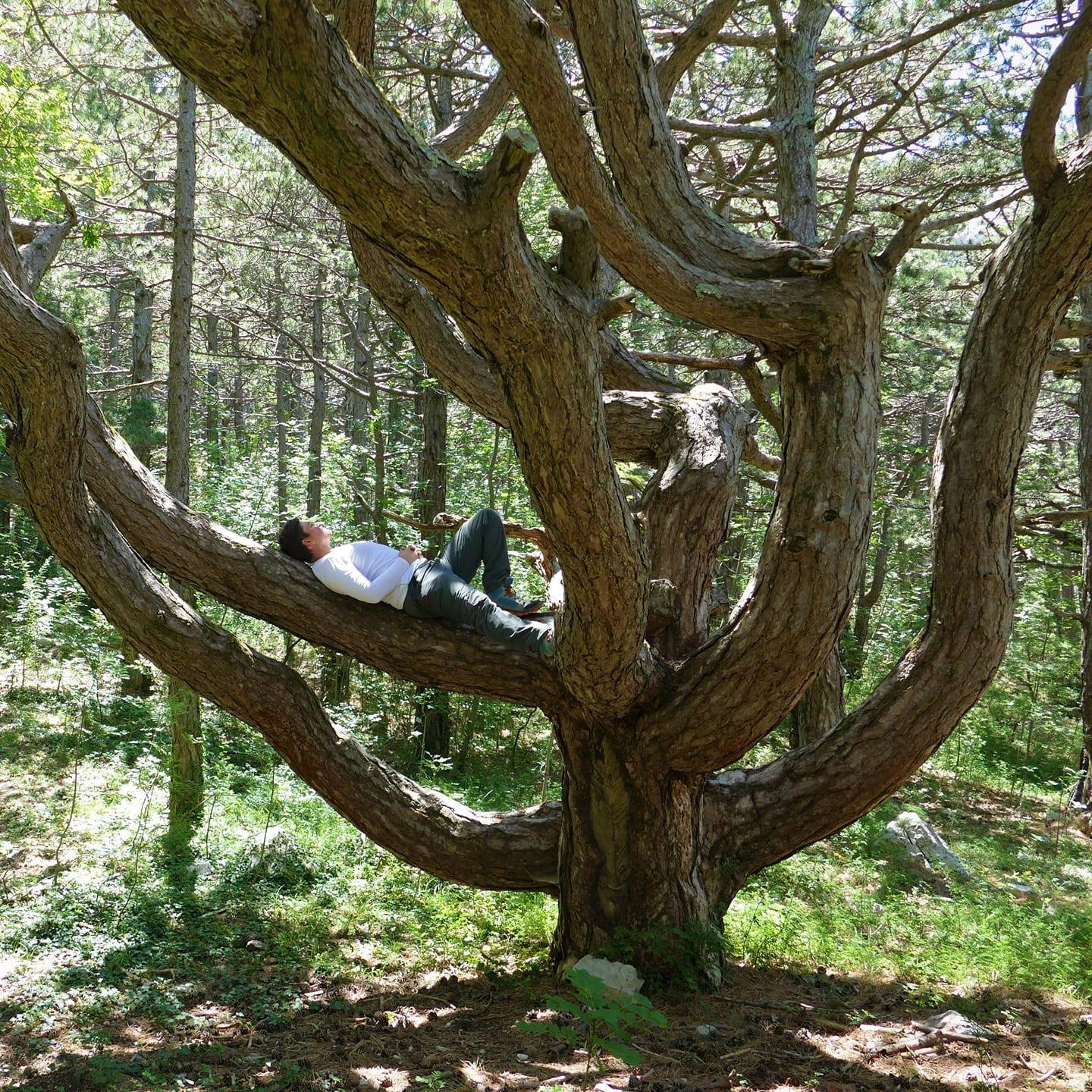
Ivan Limić, co-author of 'Plants of Klis Fortress', relaxing in a Black Pine
TCN talked with Ivan Limić to find out more about the book and about the plants of Klis Fortress
I first met Vedran when I started volunteering at Herbarium Croaticum Zagreb. I was in the city doing my degree. My main interests are forest silviculture and soil erosion, karst melioration, assessment of atmospheric deposition, study of flora, plant determination in Mediterranean region forest ecosystems and the effects of forest fires in those areas. We talked about doing a joint project because we shared similar interests. Vedran came to visit me in Klis and I wanted to show him around the fortress, but looking specifically at the flora. That's when we decided we should do a book about the plants of Klis Fortress.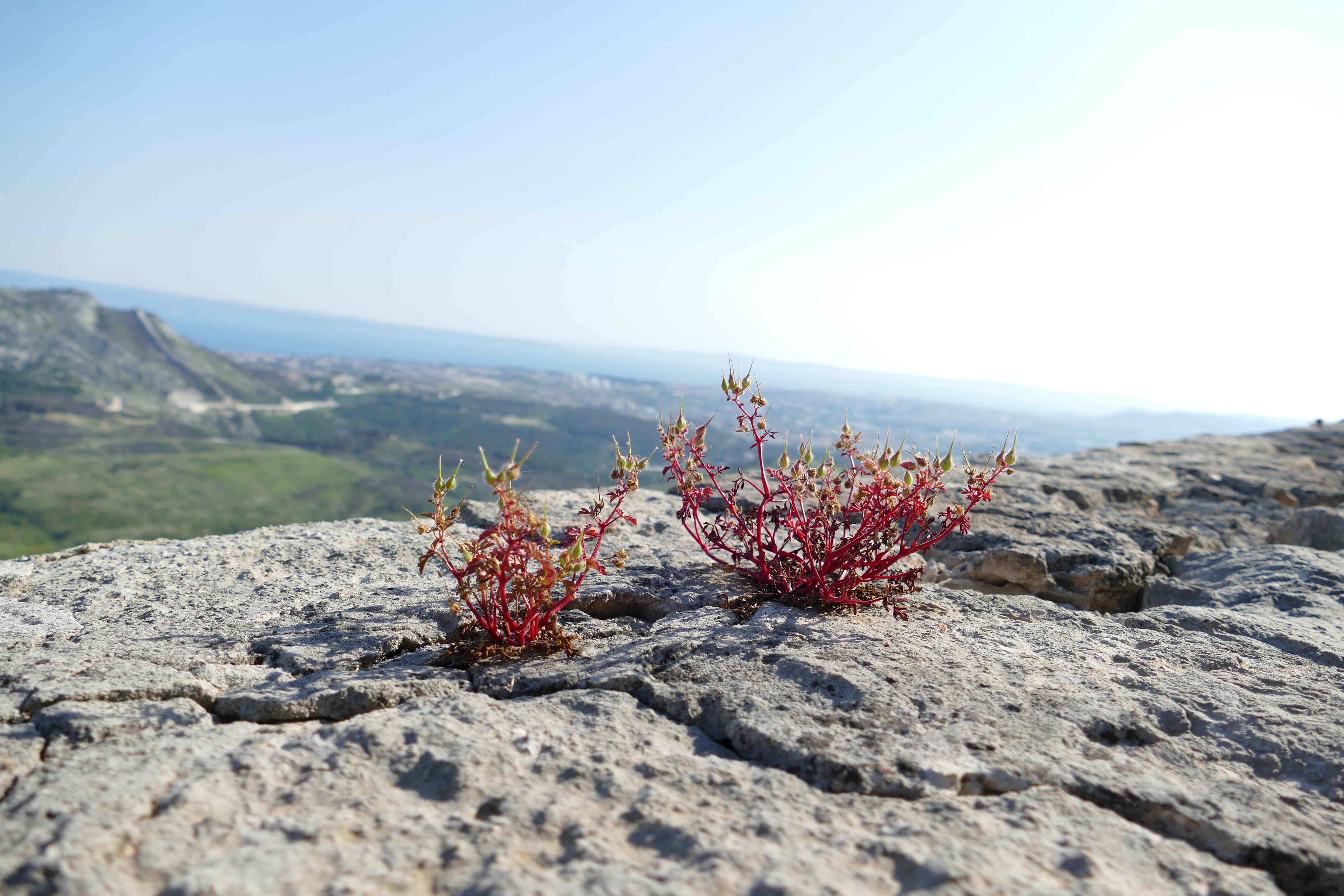 Geranium purpureum, the little-robin
Geranium purpureum, the little-robin
I walked around Klis Fortress all my life. When you live in a place, you not only acquire so much information about that place over the years, you also have an emotional connection to it. That's not something you can read in every book. Hopefully, with our book, we managed to get a sense of that emotional attachment across, so that you can really feel the place.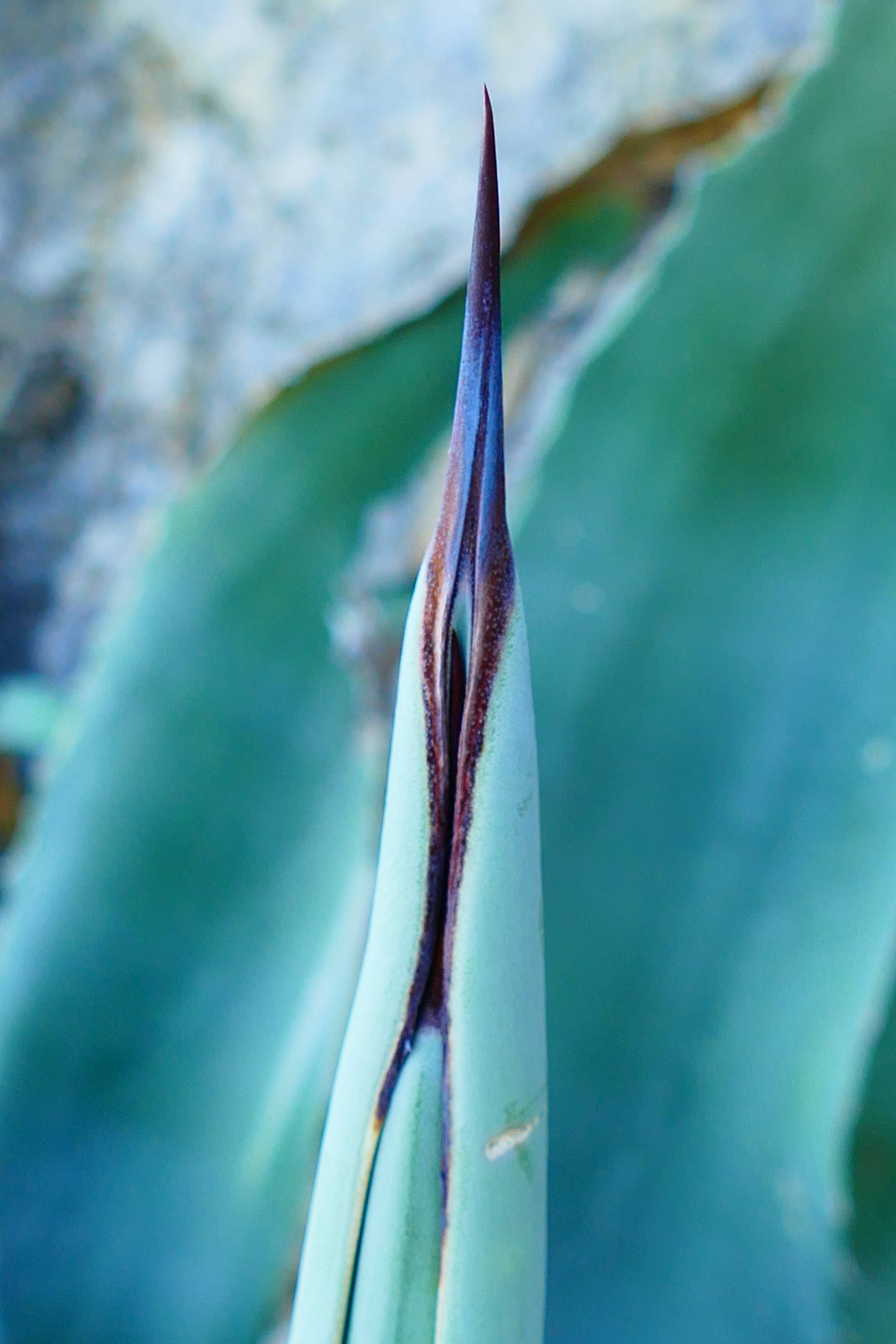 Agave americana
Agave americana
In a way, the special thing about the plants of Klis Fortress is that they are not so special at all – they are extremely characteristic. But, they are characteristic of two completely different climate regions.
On the south side of Klis Fortress, it is very warm and sunny – the Mediterranean climate. You can find species like Aleppo pine. On the northern side of Klis Fortress, it is colder – the sub-Mediterranean climate. Here, you can even get snow in winter and the most common species is Black pine. Two completely different climate regions in just a 50 metre stretch diagonally along the ground. That's what makes it extraordinary.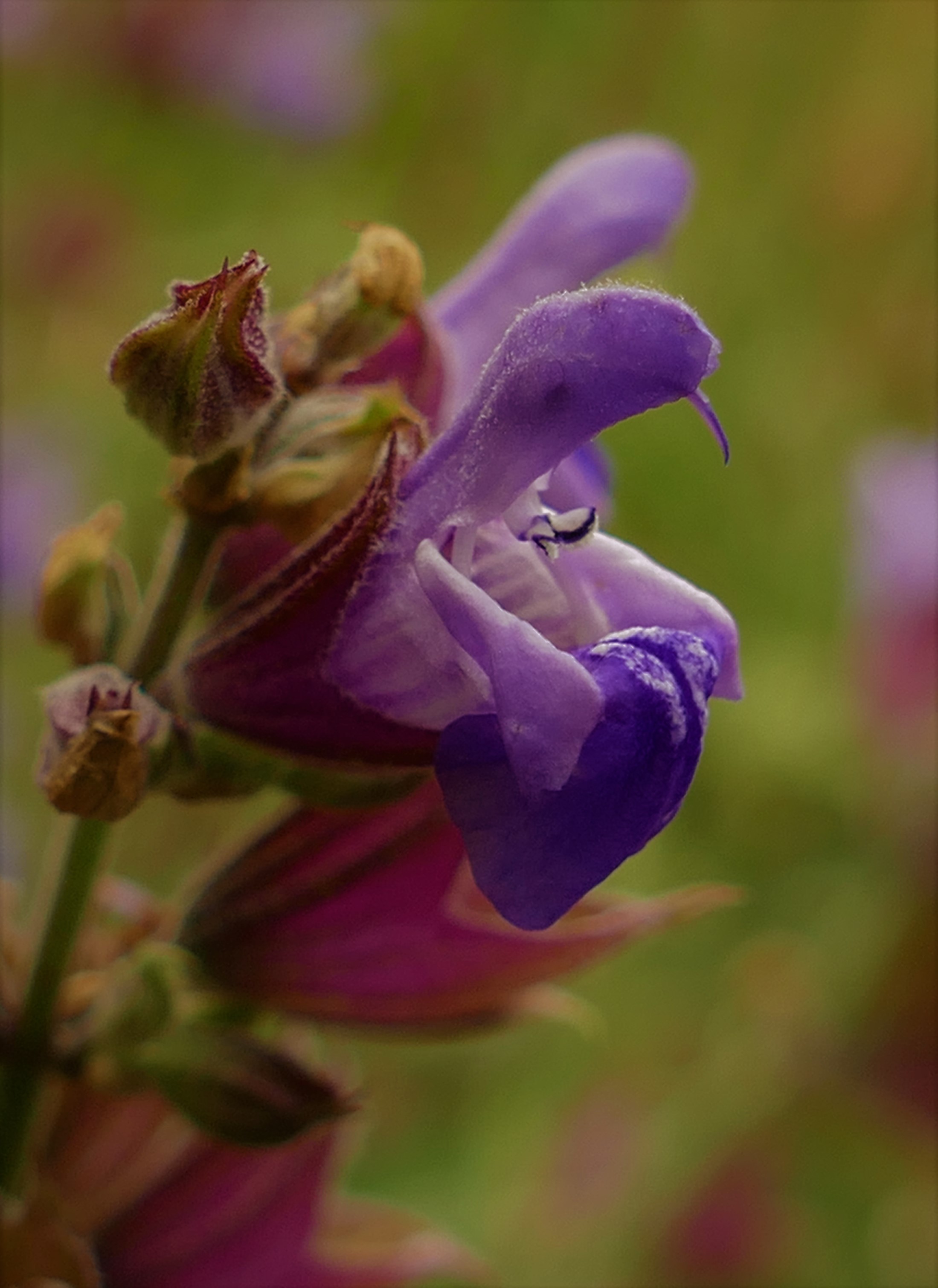 Salvia officinalis (sage)
Salvia officinalis (sage)
The plants of Klis Fortress include more than 300 species. We have around 100 of them listed in the book. Of those, 16 are species endemic to this area. Some of those are extremely rare - you can find them in very few places in Croatia - such as Fibigia triquetra. That plant is actually one of the reasons why this book exists. When I was a child, people used to tell me that some of the plants of Klis Fortress were very unusual and very rare. I used to walk around the fortress, looking at all the plants, trying to guess which ones were the unusual and rare species.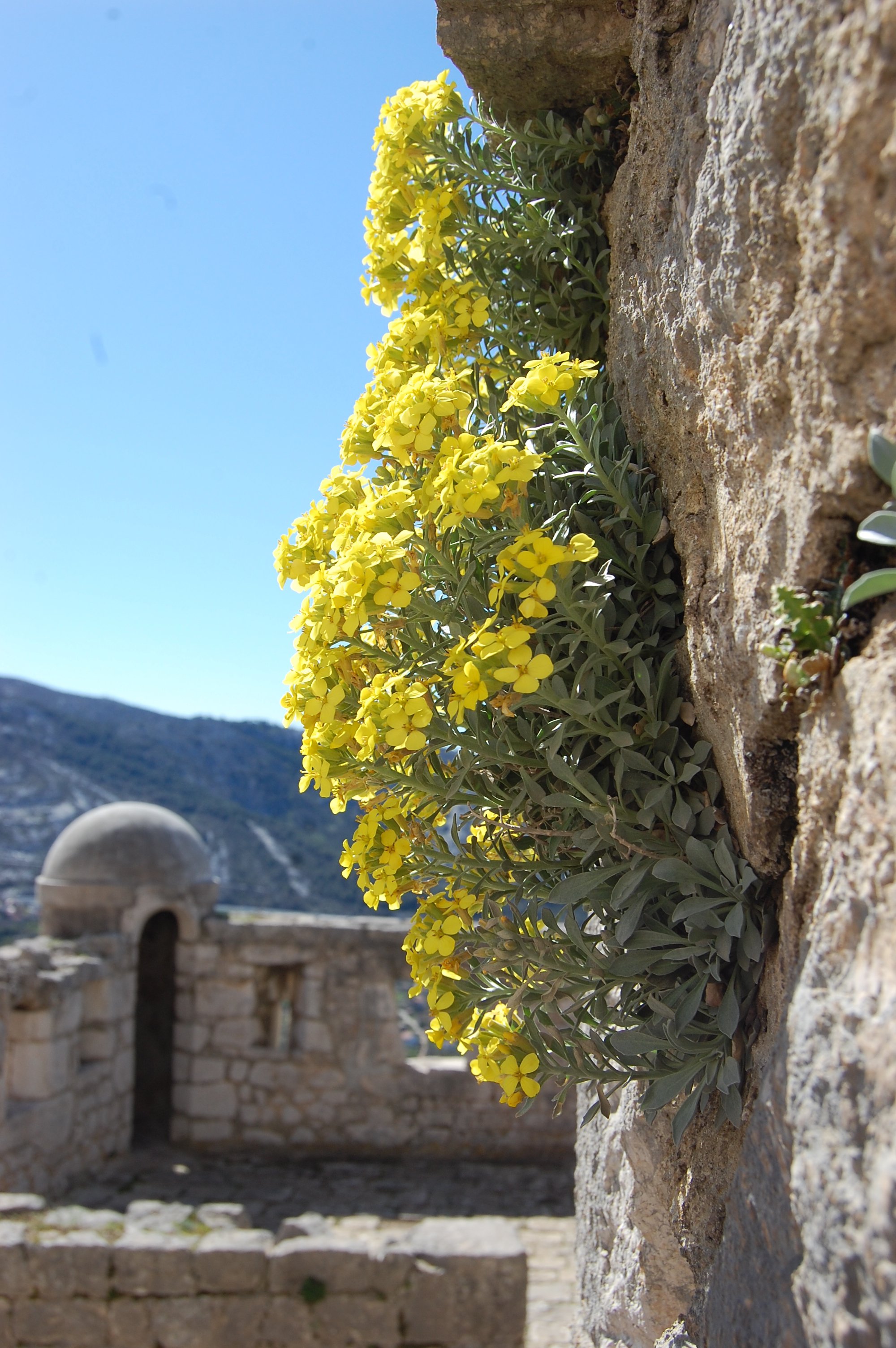 Fibigia triquetra
Fibigia triquetra
The man who first identified this as a unique, endemic species actually discovered his first specimen inside Klis Fortress. All of the studies and writings he made about the plant were done here. That plant is now the symbol of Klis Fortress.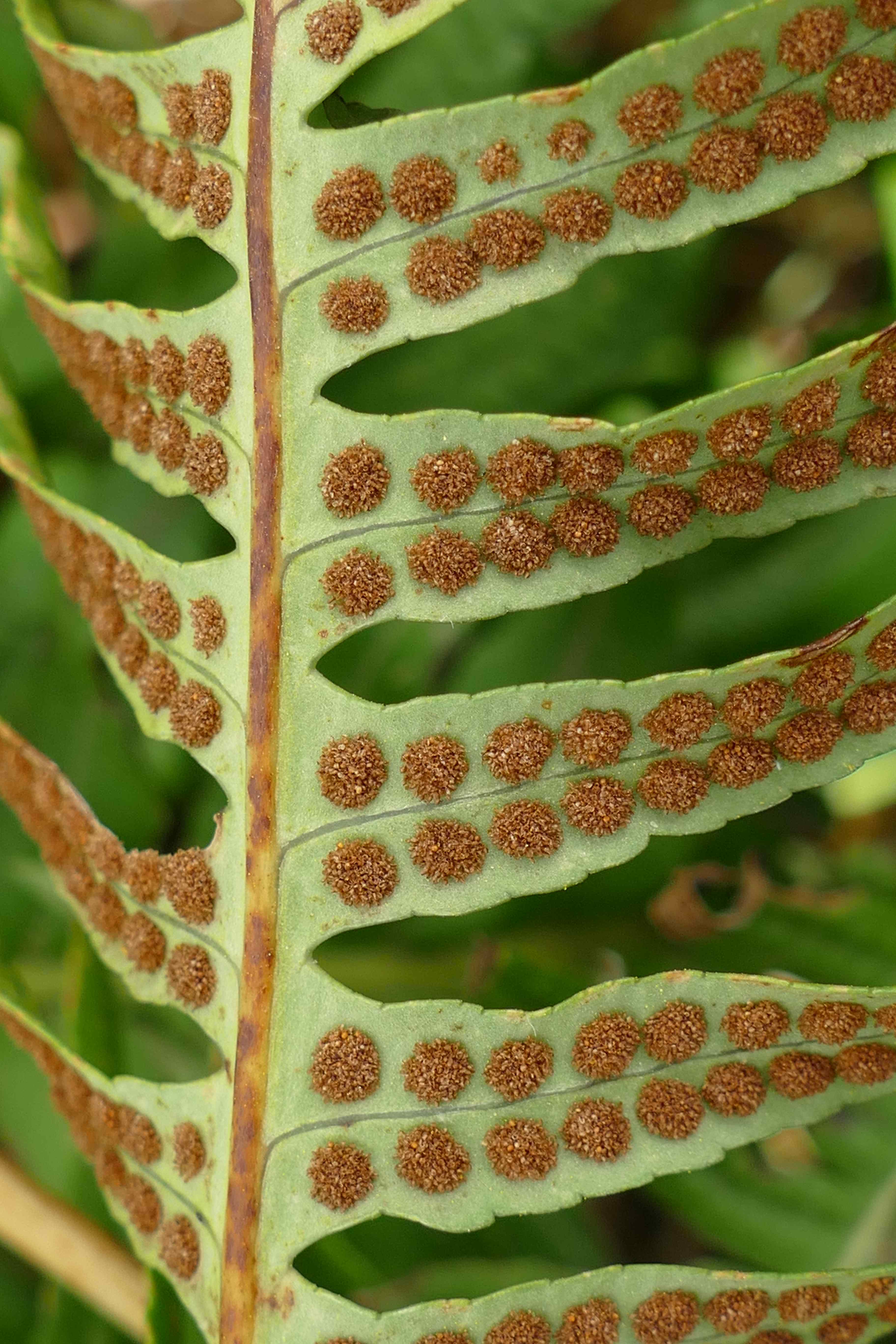 Polypodium cambricum
Polypodium cambricum
You can find our book in Klis library. Anyone can borrow it. It's also available at the entrance to Klis Fortress, where you buy the tickets. We wanted to give the opportunity to anyone who comes here to learn about the plants of this region – that's why we made such an effort to have the book in five languages. It was designed as a guide to the plant species of the whole Mediterranean mountain region in Croatia, so it's not just for the plants of Klis Fortress or the people who come to Klis Fortress itself.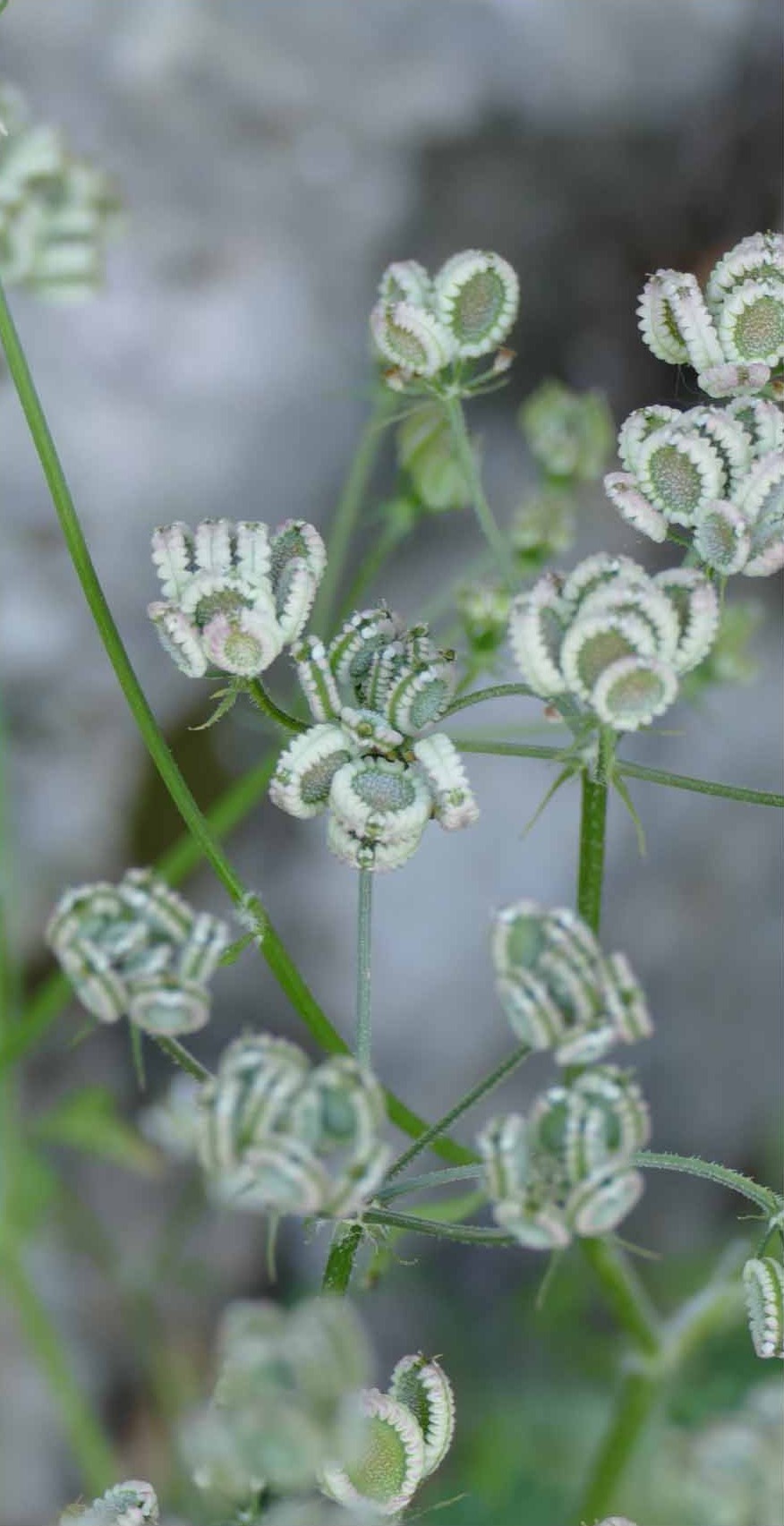 Tordylium
Tordylium
Most of the photography in the book was done by ourselves. It was important to take the photographs across four different seasons. That's one of the reasons it took almost two years to write this book.
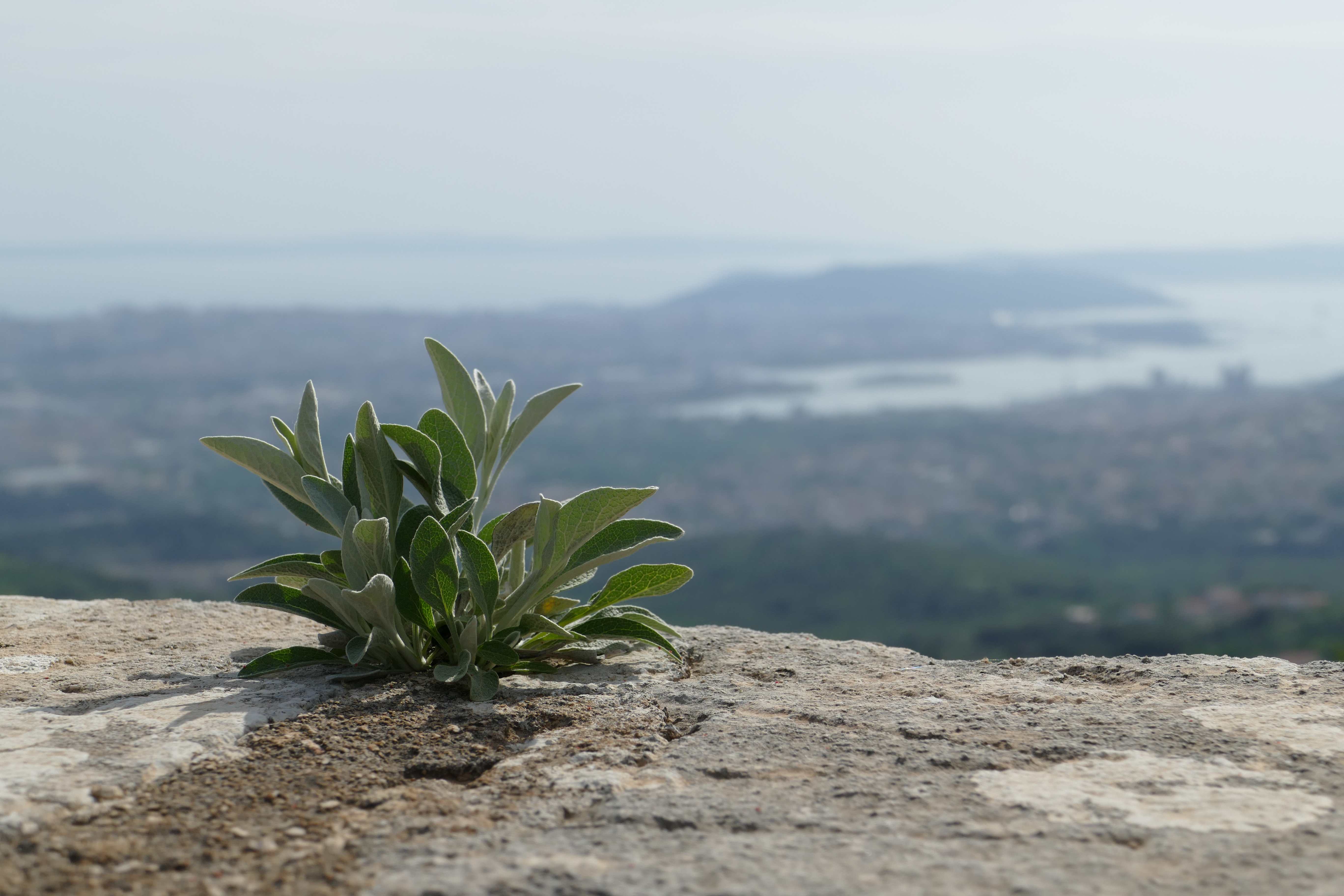 Inula Verbascifolia
Inula Verbascifolia
As we were making progress on the book, people in Klis began to find out what we were doing. It ended up becoming a project of the wider community. The mayor of Klis supported the project financially so that we were able to publish the book professionally and the library of Klis edited and published the book.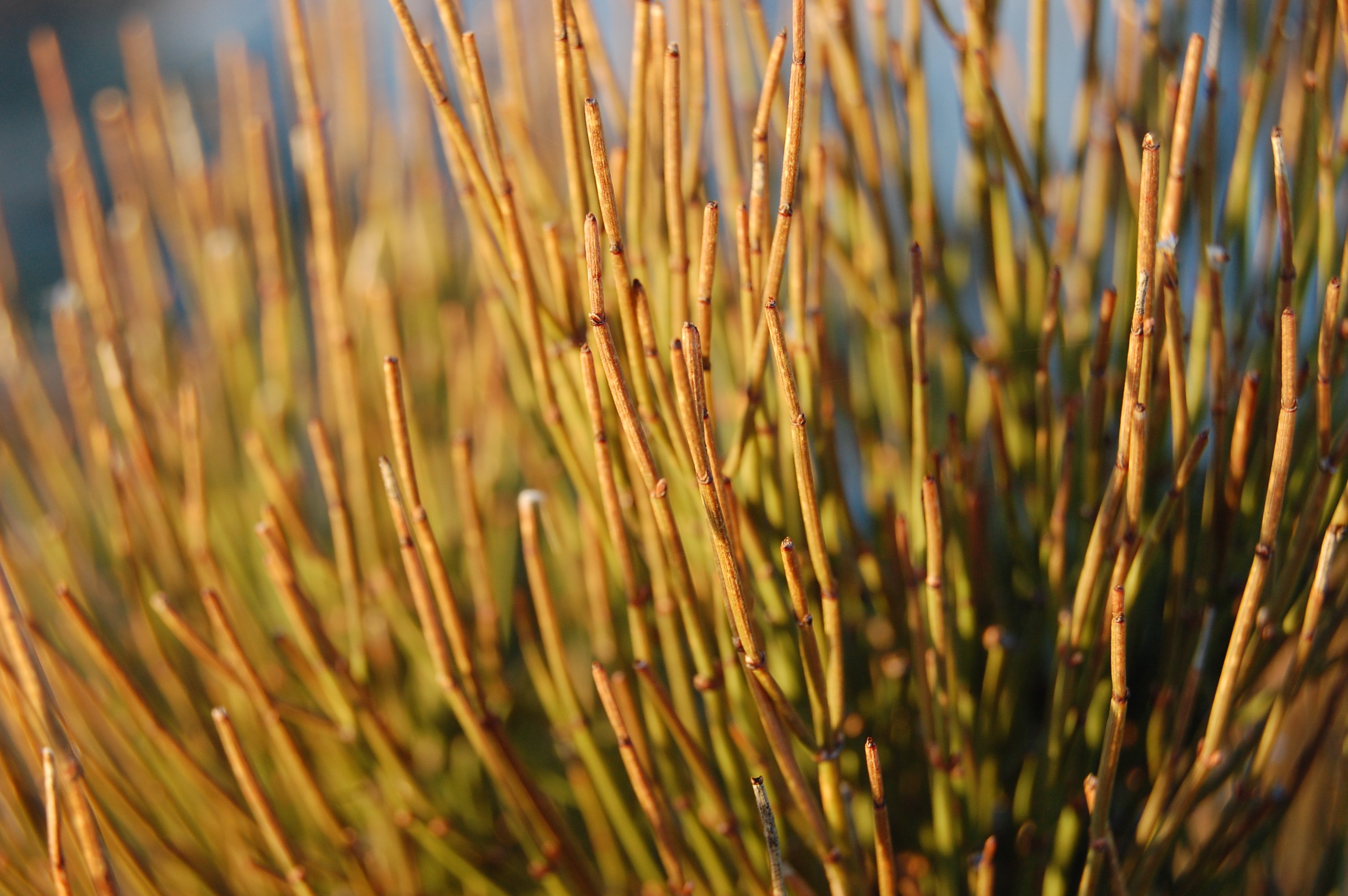 Ephedra major
Ephedra major
Others contributed to the design of the book and the translations, of course. Almost all of them donated their time and work to the project for free. It is quite difficult to translate some of this specific text correctly and we wanted to get it absolutely right. 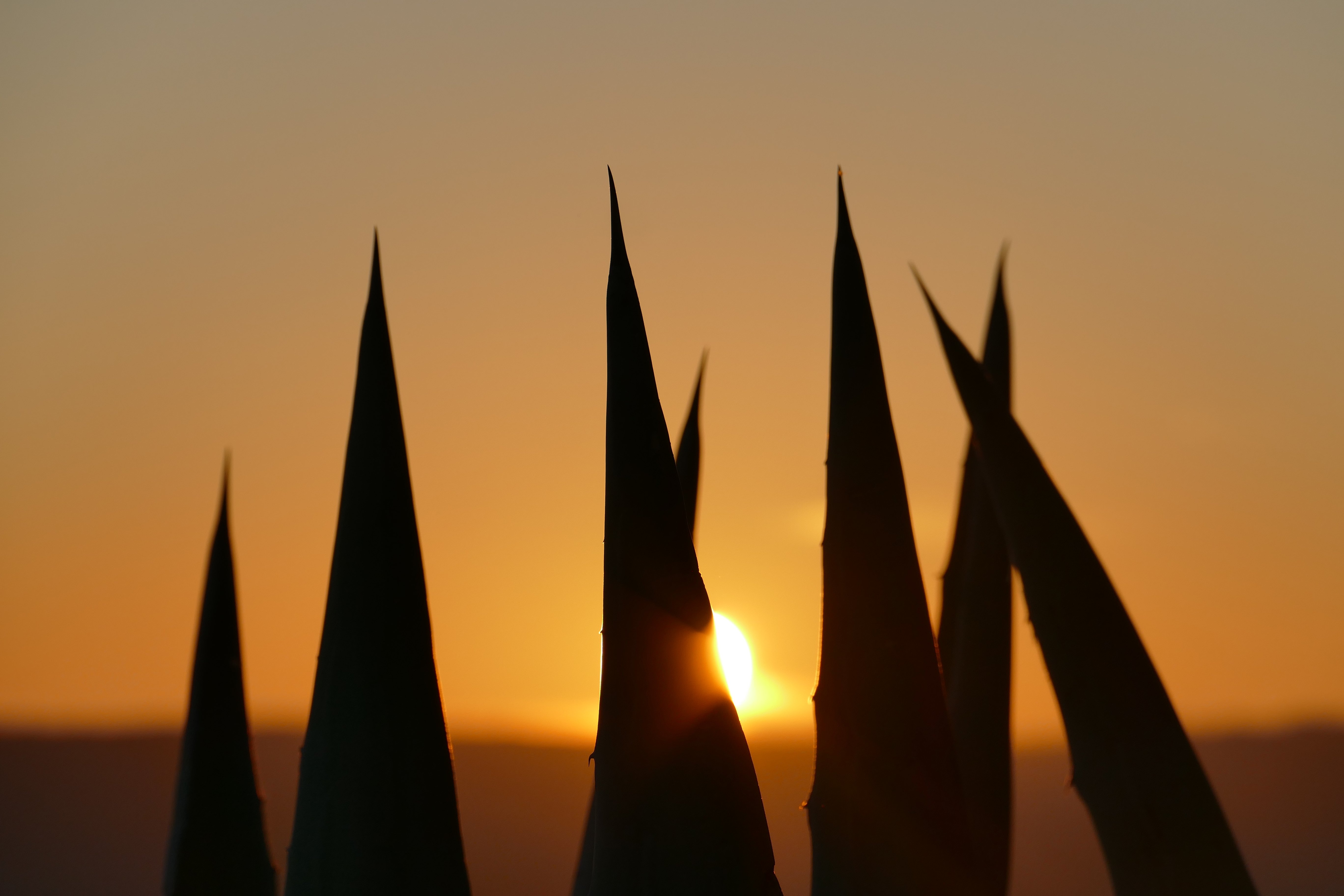 Agave americana
Agave americana
In the end, we ended up getting contributions from Italy and France, we had one colleague from the French embassy who helped and some of the best botanists we have in Croatia contributed to the book to make sure everything was absolutely correct. For that reason, the book was approved and recommended by the Botanical Society of Croatia and can be found in the Botanical library.
All images © Ivan Limić / The Plants of Klis Fortress
Botanical Garden Enters Autumn Season Ahead of 130th Anniversary
The Botanical Garden in Zagreb recently renovated a brick house erected in 1891, but it still needs 10 million kuna for a greenhouse reconstruction.
Botanical Garden Zagreb Receives TripExpert Choice Award
TripExpert rates sights based on expert reviews from travel magazines
"Biljke i svirke" at Zagreb's Botanical Garden
Over two consecutive weekends, June 11 and 12 and June 18 and 19, the Botanical Gardens in Zagreb will be host to an event "Biljke i svirke", connecting music and nature in a more than original way.


